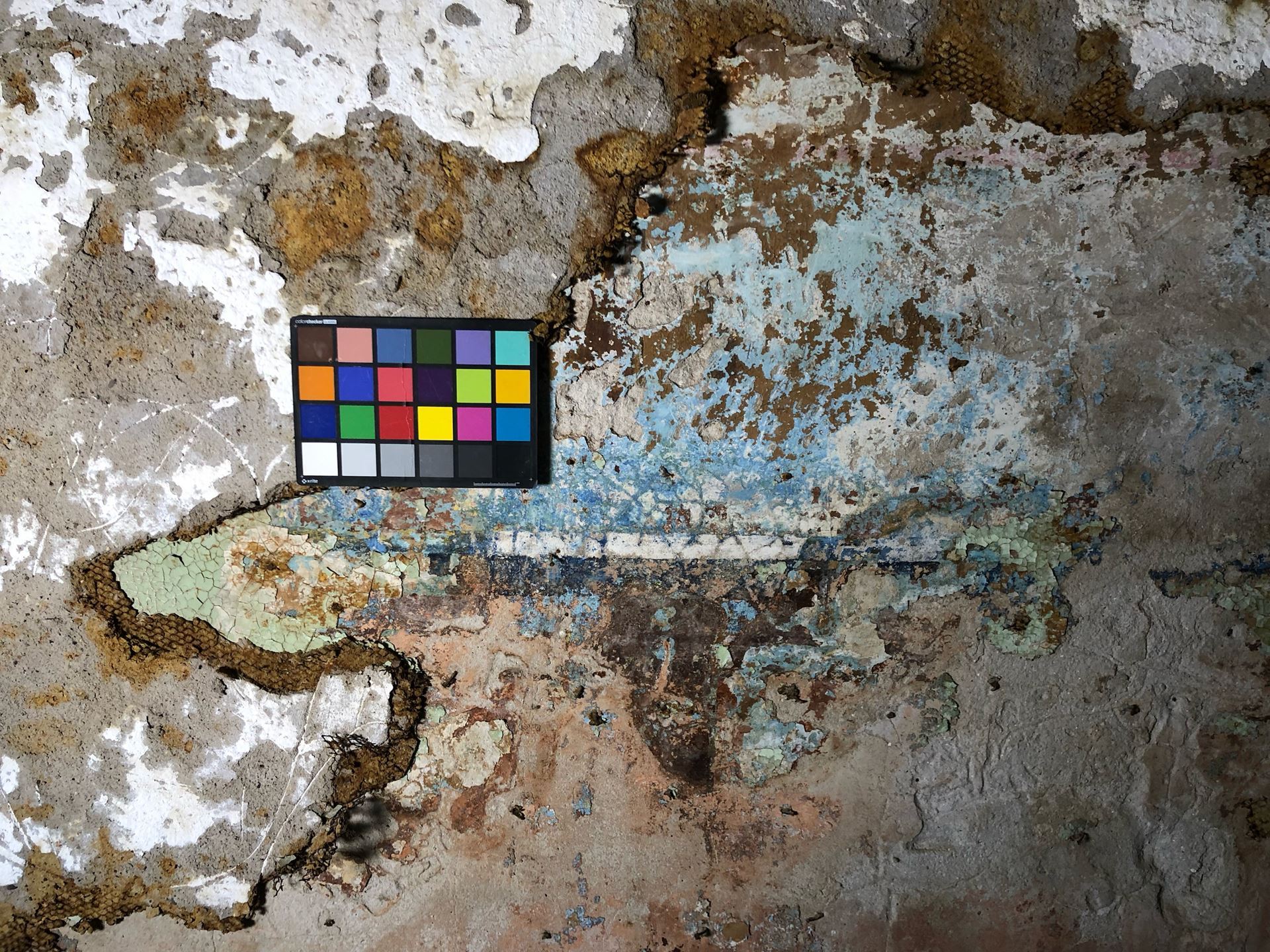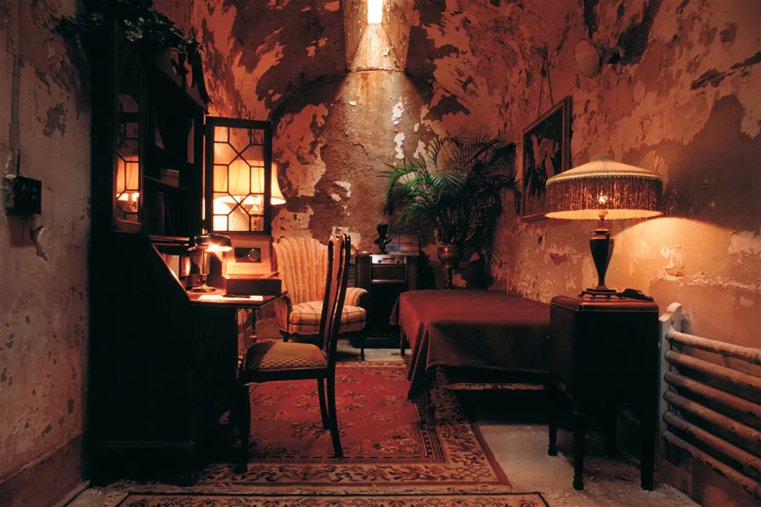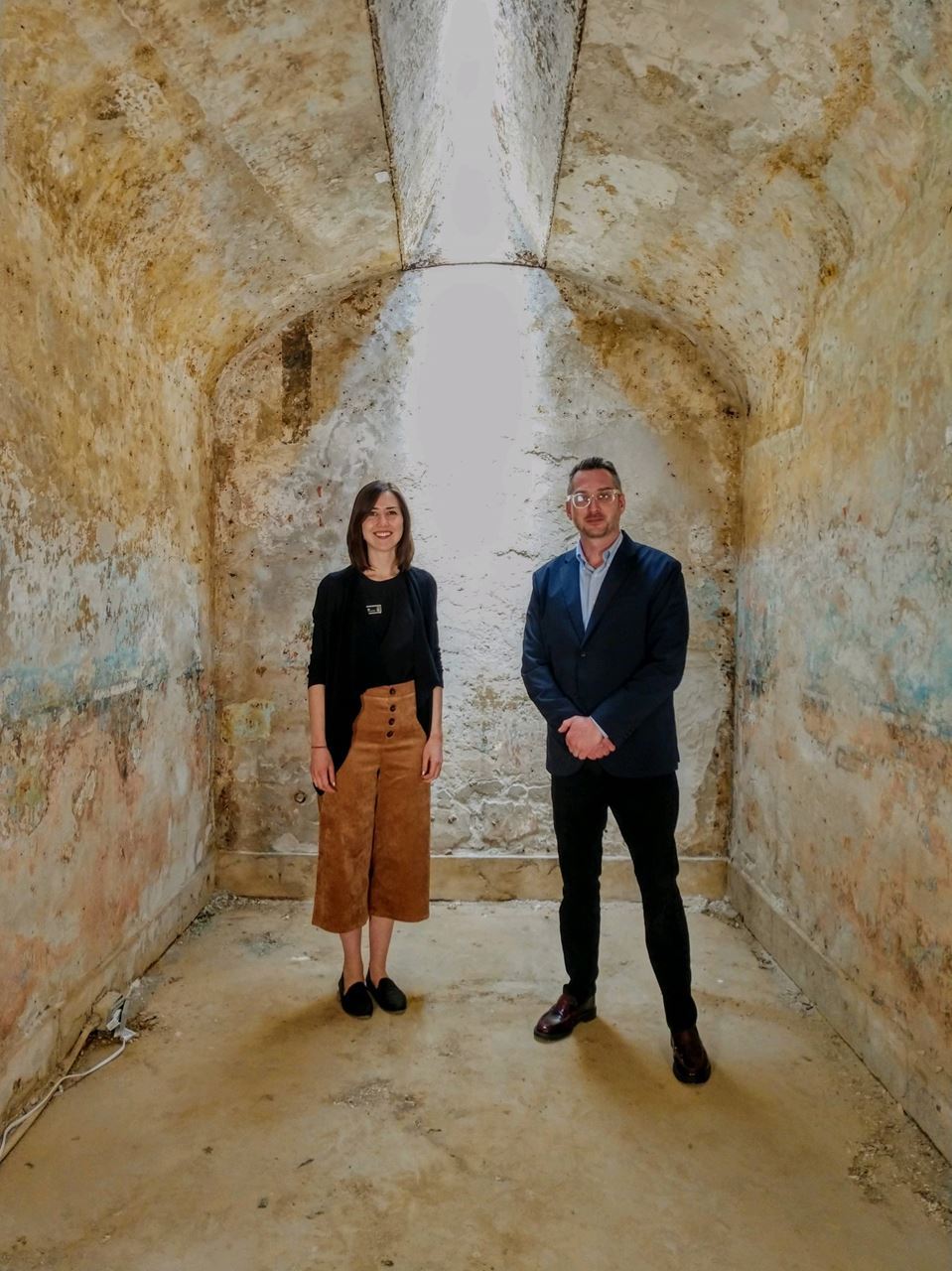Philadelphia’s Eastern State Penitentiary (ESP) is considered to be the first penitentiary built in the United States. The penitentiary’s innovative radial plan, designed by English-born architect John Haviland, proved influential on a global scale as an architectural marvel built to instill penitence in the hearts of its inhabitants through solitary confinement. Active from 1829 to 1971, ESP documents the evolution of the American penal system woven into a complex building chronology spanning over 140 years. Designated as a National Historic Landmark in 1965 and opened to the public in 1994 as a stabilized ruin, ESP draws visitors from around the world to experience the densely layered historic site in a predominantly unrestored condition.

In 2019, during a project to reconstruct a cell interior, conservators discovered evidence of both decorative and pictorial painted finishes that has redefined the understanding of life in prison at ESP. The careful mechanical removal of an extant plaster layer from the walls uncovered a rich repository of stratigraphic evidence of finish histories, including exposed features of paint fragments from past interior campaigns. Although a second phase of microscopy and instrumental analysis is still underway, current archaeological investigations and studies of chromochronologies indicate four major paint configurations dating from the late-nineteenth to mid-twentieth centuries. Of particular significance are features that closely align with one of the few documented inmate-painted murals that appears in a photograph from the 1930s. Photogrammetric analysis of the image compared with in-situ measurements serve as quantitative evidence to support that the photographed mural and remnant painted finishes are from the same cell. Through the assembly of a complex puzzle of diagnostic features, a clearer, more accurate picture of a forgotten cultural history is transformed into color.

As the first dedicated investigation of architectural finishes within a single cell at ESP, the newly found material record has prompted issues of authenticity, challenging site stewardship to present a more dynamic narrative of prison life. This landmark study of paint history at ESP provides a new path for the interpretation of cell interiors and related rehabilitative environments while casting new light on the artwork of the incarcerated.
Presenters:
Andrew Fearon, Chief Architectural Conservator
Materials Conservation, Philadelphia, USA
Since 1995, Andrew Fearon has worked in the field of conservation encompassing architecture, decorative arts, and archaeological materials. In 2006 he joined the Philadelphia based firm Materials Conservation where he currently serves as Chief Architectural Conservator specializing in wood, architectural finishes, and masonry. Among his completed projects are Jefferson’s Monticello, Frank Lloyd Wright’s Taliesin West, and Alexander Hamilton’s First Bank of the United States. Since 2010, he has served as lecturer in wood conservation as part of the University of Pennsylvania Graduate Program in Historic Preservation. He holds a Master of Science degree in Historic Preservation from the University of Pennsylvania and has completed the ICCROM Wood Course in Oslo, Norway. Andrew currently serves as a board member for APT's Delaware Valley Chapter and Docomomo's Philadelphia Chapter. He is also Vice-President, Director of Advocacy for ICOMOS' Scientific Committee for Wood and is a former chair of The American Institute for Conservation Architecture Specialty Group.
Elizabeth Trumbull,
Manager of Historic Preservation and Architectural Conservation
Eastern State Penitentiary Historic Site
Philadelphia, USA
Elizabeth Trumbull is the Manager of Historic Preservation and Architectural Conservation at Eastern State Penitentiary Historic Site in Philadelphia. In her role, she engages in preservation planning and facilitates conservation and maintenance initiatives for all structures on the 11-acre site. She is also developing a conservation training program at ESP to create job training opportunities in the preservation trades for local Philadelphians. Elizabeth’s graduate thesis, “Building Organizational Capacity for Preventive Conservation,” identifies strategies for stewards of historic sites for adopting more proactive approaches to preservation. Before coming to ESP, Elizabeth worked as a structural engineer in Chicago, where she specialized in facade investigations and adaptive reuse projects for existing and historic buildings throughout the city. She holds a Master of Science degree in Historic Preservation from the University of Pennsylvania and a Bachelor of Science degree in Civil Engineering from Northwestern University.

This program will be conducted via GoToMeeting. A link will be shared with a confirmation email to the address associated with your registration the morning of March 3.
PA Museums is committed to providing a safe, inclusive, and welcoming environment that is free of bias and intimidation. In keeping with federal laws, state laws, and non-profit best practices, PA Museums expressly prohibits any form of discrimination or harassment based on race, color, religion, sex, age, sexual orientation, national origin, disability, genetic information, body size, marital status, changes in marital status, pregnancy, parenthood, status as a Vietnam-era or disabled veteran, or any other protected classification. By registering for our program, you are acknowledging PA Museums' Code of Conduct.